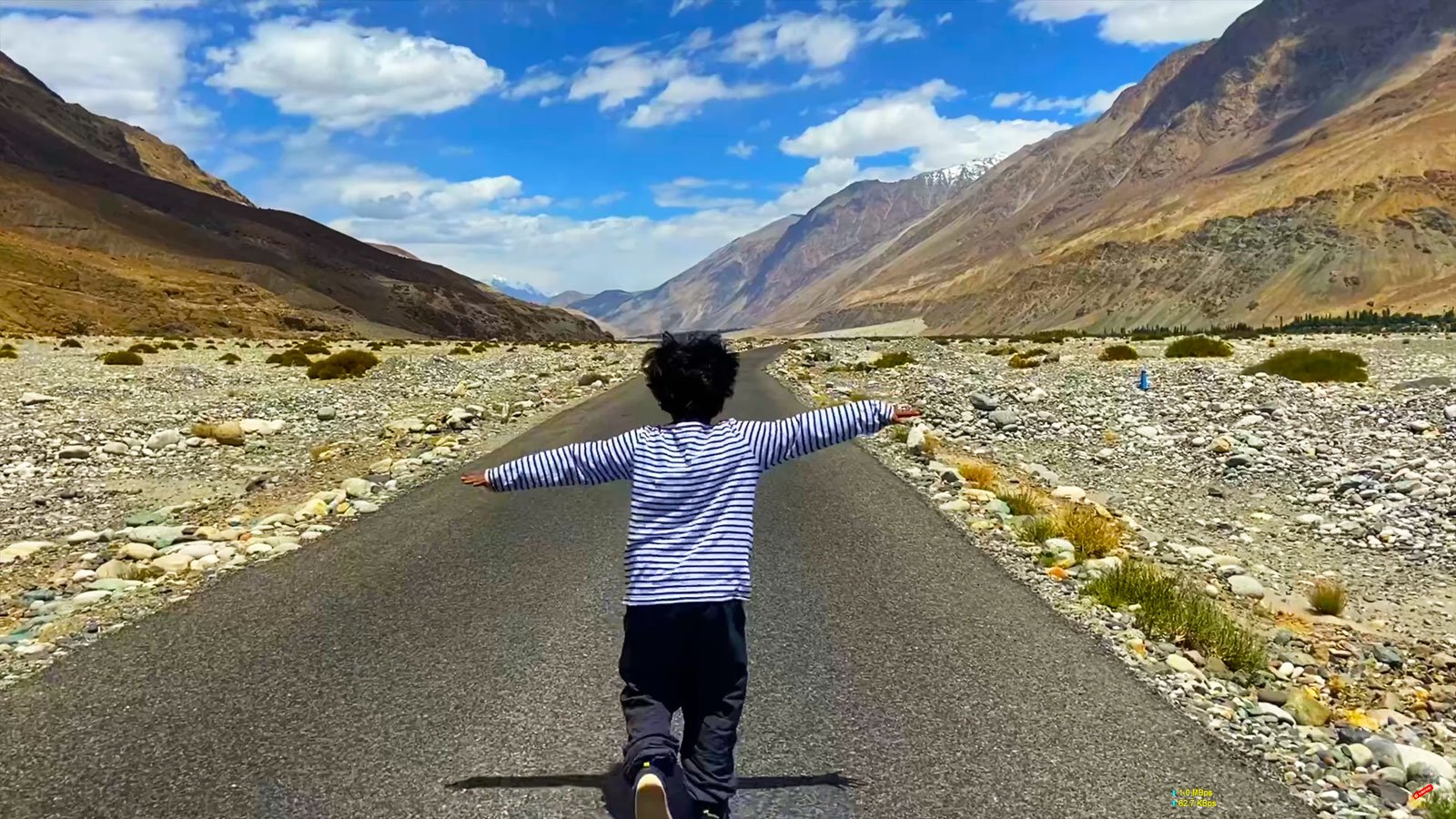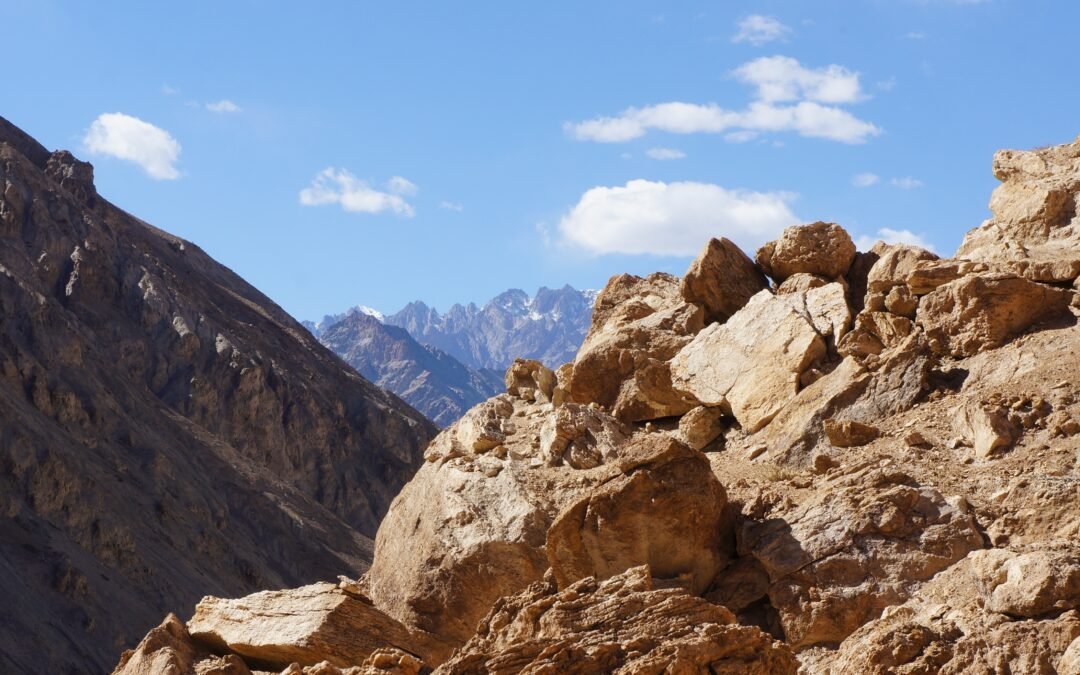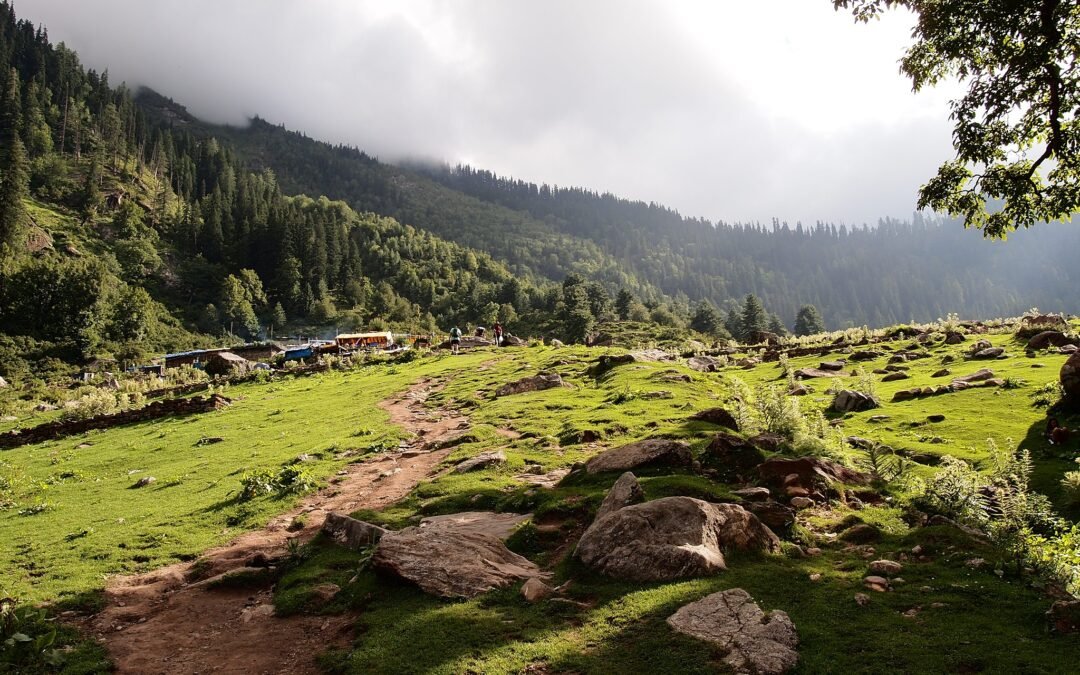
Friends, do you want to go to Ladakh, Zanskar, or Spiti Valley with your family, including small children aged two to four years, five years, ten years, or older? Are you having doubts about what type of trip you should plan with children?
Today, let’s talk about this topic, and I will share a tip for traveling to these places with your family, including children. Before starting, I would like to tell you that this blog is purely informational. I am giving a full disclaimer that this is not medical advice. Please, whenever you travel to high-altitude places, especially with children, older parents, or anyone with a medical condition, always consult your doctor. For children, consult a pediatrician and only then plan your trip to a high-altitude place.
Now, after this warning, let’s first discuss if you have a three-month-old or a six-month-old baby in your group. The remote places you might visit, such as Ladakh, Spiti, or Zanskar, are not suitable for such young children. In this situation, the answer is very simple: do not travel to such remote places with very small children. This can prove to be dangerous. Again, this is just my informational advice, but you should confirm this with your doctor or pediatrician. Small children’s organs are still developing, so high altitudes can be particularly taxing. It is best to wait until the child is older before considering such travel.
Next, let’s address children between one and five years old. Acute Mountain Sickness (AMS) can affect anyone, regardless of age, but it is especially challenging with small children. It is crucial to follow AMS guidelines for children as well.
Small children cannot always communicate how they feel, so it is important for parents to pay close attention to their symptoms. Children between one and five years old may not be able to articulate discomfort or symptoms of AMS, making it even more critical for parents to monitor their condition closely. If symptoms worsen, descend to a lower altitude as soon as possible.
For children over five years old, they may be better able to communicate their symptoms. However, you should still be vigilant and manage their condition carefully. Children have many needs, so be sure to carry any special items they require.
Make sure to follow AMS tips and principles. The second thing is to read my blog on MS tips, and just as you follow those MS tips, you should also follow those tips for children. This is the biggest challenge.
Small kids are unable to tell how they are feeling. What comes with small children, especially those between one and five years of age, is that if they are facing problems because of MS, they cannot articulate it. For example, if you have a headache or are trying to vomit, you can tell someone about it. But how will a small child express this feeling, especially before they start speaking? They will cry more, right? As parents, it becomes your responsibility to pay attention to their symptoms.
Keep in mind, if you are traveling, my personal recommendation is not to travel with small children at all, especially those who are less than two and a half to three years old. Only after that age should you consider it. Therefore, it is very important for parents to keep an eye on their child’s activities. Children become very excited, and they may not understand that they need to rest in high-altitude places. They will run and jump, and may experience shortness of breath. It is difficult to explain to small children and to understand their symptoms because they cannot communicate effectively.
As a parent, it is your responsibility to observe their symptoms and, if they seem severe, descend to a lower altitude as soon as possible.
For children over five years
If the child in your group is over five years of age, they will be able to communicate their feelings, such as if they are vomiting. You will have some control over their condition, and you can wait for two to three days to see if the situation improves. It becomes more challenging with younger children, who have many needs.
Carry any special items needed by your kids
You should pack any specific items your children need. Don’t rely on finding these items in remote places, as it may be difficult to get things there.
Also Read:Appropriate clothing
Ladakh Spiti trip with kids summary
To summarize, do not travel with very small children, such as those younger than one year, to high-altitude places. For children between one and five years old, you need to be attentive to their symptoms if you choose to travel. For children over five years old, you need to be cautious but can manage their symptoms better. Small children can communicate their problems, but you must still be vigilant.
Increase altitude gradually
The first tip is to increase your altitude gradually and slowly. When traveling with your child to a high-altitude place like Ladakh, Spiti, Zanskar, or Pangi Valley, do not go via the Manali highway. Use the Srinagar to Leh route for Ladakh/Zanskar to ensure gradual altitude increase. Similarly, for Spiti Valley, go from the north side of Shimla and gradually increase the altitude.
Keep your kids adequately hydrated
Ensure that your children stay well-hydrated. Do not give them too much water at once, as it can lead to vomiting. Maintain proper hydration by giving them juices like Glucone D or ORS packets. There are flavored options that children like, so carry them with you and make them drink at regular intervals.
Also Read:Best Hotel in Nubra
Protect Your Kid from Cold Conditions
Now, the third important point is that you need to protect children from cold conditions. Their bodies should always remain warm, so carry proper clothing for them. Children catch cold quickly if you do not keep them properly covered. Even at home, children catch cold easily. Imagine being in a remote place like the Himalayas or Ladakh, where medical facilities are limited. To avoid such situations, ensure that the child does not feel cold by keeping them well-covered with appropriate clothing. If the child feels cold or becomes sick, their body will be fighting both altitude sickness and the illness, like a cough or cold. Therefore, keep the children well-covered and protect them from the cold.
Protect Kids' Soft Skin from UV Rays/Sunlight/Sunburn
Now, the fourth point is that children who play outside will be exposed to UV rays. The heat is very high, especially at high altitudes, and sunburn is quite common in the mountains. Since children’s skin is more delicate, it is crucial to protect it. Keep their skin properly covered by making them wear long sleeves, hats, and caps. Always cover their bare body parts and ensure they wear socks and shoes to protect them from both cold and sunburn. You should also carry sunscreen suitable for children. Consult a doctor about which sunscreen will be safe for your child and apply it to their exposed skin at regular intervals.
Limit Your Stays at High Altitude Places
The fifth tip is to minimize your time at high-altitude places like Khardungla, Nubra Valley, Pangong Lake, Changla, or Kunzum Pass. If you visit Chandratal Lake, spend minimal time at these high altitudes, ideally 10-15 minutes. With children, it is best to stay for no more than 10 minutes, take photos quickly, and descend as soon as possible. Similarly, for high-altitude places like Pangong Lake or Chandratal Lake, avoid overnight stays. Opt for day trips and stay at lower altitudes nearby. For instance, near Pangong Lake, you can stay at Tang, or near Chandratal Lake, stay at Shishu. Avoid the Manali Highway if traveling with children, as the average altitude is around 14,000 feet, which can be challenging for children.
Always Keep an Eye on Weather Updates
The sixth point is to be extra cautious with weather updates. For example, if you plan to go to Nubra Valley and the weather forecast is bad, such as snow at Khardungla Pass, you could get stuck. The 10-15 minutes recommended for high-altitude passes could increase due to traffic jams or road closures. Regularly check current conditions and avoid traveling to high-altitude places in poor weather. If stuck in traffic jams at high altitudes, it can cause significant problems for children.
Always Be Vigilant About Your Kids' Symptoms or Well-Being
The seventh and final tip is to remain alert and pay attention to any symptoms or discomfort in your child, especially those between 2 and 5 years old. Ensure that they do not face any problems. If you notice any issues, whether minor or severe, descend to a lower altitude as soon as possible. It is your responsibility to ensure the child’s well-being.
Carry an Oxygen Cylinder with You or Rent One in Leh if Possible
I would like to add one more tip regarding high altitudes. In Ladakh or Spiti Valley, consider carrying an oxygen cylinder with you. This provides a sense of security in case anyone in the group, including children or elders, falls ill due to altitude sickness. I recommend carrying a large cylinder rather than small cans. If you are doing a self-drive trip, you can rent oxygen cylinders in major cities. This can help you reach safety, especially if someone’s health deteriorates at high altitude.
Winter Season Travel Considerations
In winter, traveling with children to such places is not recommended. I have detailed in my blogs the difficulties you may face. For example, Pangi Valley remains mostly closed, and extreme winter conditions in Ladakh or Spiti Valley can be very dangerous. Consult a doctor, but even if the doctor agrees, I still recommend avoiding such adventures with small children in extreme winter conditions. The roads can be closed for extended periods. Wait until the children are older for such adventures. Be patient and remember, this blog is not medical advice. Always consult your doctor or pediatrician before traveling to high altitudes with children. Follow their advice to plan a safe trip to places like Ladakh, Spiti Valley, Zanskar Valley, and Pangi Valley.
If you need more information, please comment. Thanks.






0 Comments